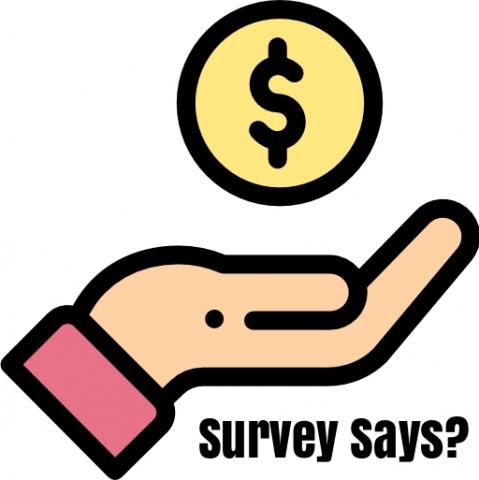College students move money primarily by using their phone. AgilePayments conducted a survey of students and asked: “What payment apps do you use most and why?”. From Venmo and Zelle to bank specific apps the students responses are summarized.

The fast-paced lifestyle of young adults in 2019, and the desire to instantaneously pay via digital payment applications on mobile phones is making payments via cash increasingly more obsolete.
The Millennial generation is set to overtake the Baby Boomers are the generation with the largest percentage of spending power in the United States. According to a 2018 report by omnichannel analytics firm Euclid, millennials represent $200 billion in spending power.
College students in particular are fond of P2P payment apps, which allow them to split the bill at a restaurant, pay fraternity/sorority or club dues, or easily split rent/utilities amongst roommates.
Agile Payments was interested in gaining perspective into how the younger generation views payments, and their take on how they prefer to “move” money. To understand how these college students interact with money a scholarship was offered with the fundamental question being asked:
What is the most innovative payment app you use and how does it affect your life?
Here are the results
The most popular P2P app amongst college students at the moment is Venmo, a peer-to-peer (P2P) money transfer mobile app that allows users request/send money to and from anyone with a Venmo account.
The app is linked to a U.S. bank account, debit card, prepaid debit card or credit card. If you receive money and want to withdraw it from Venmo, you’ll need to link a bank account.
College students are particularly drawn to Venmo for two main reasons. Firstly, unlike Apple Pay the app is available to both Iphone and Android mobile users, making it far more accessible. The app acts as a common ground for students who prefer Apple Pay or Samsung Pay.
Secondly, an integral part of the Venmo platform is the app’s social feed. The app has a feed akin to Facebook that makes payments between users feel like conversations more than transactions.
Venmo’s main drawback is the potential for fraudulent charges.
Zelle is the big banks response to Venmo’s rise in popularity amongst Millennials. Zelle users can transfer funds between user’s bank accounts using only an email address or phone number. Users do not need to use the same bank, and unlike Venmo the payment is processed between accounts within minutes as opposed to two or three days.
While Zelle processes payments instantly, payments can take 3 days or more to process if the user was not previously enrolled with Zelle. This can be a major detractor for college students, when competitor Venmo can be downloaded and
Since Zelle is partnered with banks, users who already have their banks’ mobile app already have access to Zelle, making the service extremely convenient.
A response:
"I use the Zelle payment option connected to my many different bank apps when I’m transferring money between accounts at different banks, and also to transfer money sometimes to both people with Apple and Android devices. The huge advantage Zelle has is that it has super smooth in-app function directly from my banks’ apps, and also that it transfers INSTANTLY! Super nice and convenient; although, if someone signs up for Zelle just before you send them money, it may take up to a week for them to receive the payment."
Banking Apps:
Personalized banking apps now turn mobile phones into personal banking devices. If college students have their phones, they have access to their money.
With banking apps, students can check their credit score while using their mobile app, apply for loans, and get reminders to pay their bills on time. The bank will monitor user’s accounts for fraudulent charges and send text notifications when suspicious charges occur.
The general consensus gathered from student responses was that the banking apps could be improved by providing users with more specific data about their purchases.
One of the students responded: “The most innovative payment application that I use is the USAA banking app on my smartphone. This app has kept me from spending too much at the grocery store, and it also allows my mother easy access into my account to give me money if needed. The level of convenience and ease in which this app can be used has made my life easier as I transition into adulthood and require access to my account.”
Acorns is a mobile “spare change“ investment app that rounds up your spending to the nearest dollar and invests that difference. Users simply need to link a credit card and checking account to the app. The Acorns app is targeted at those with little experience in traditional investing, especially the younger, tech-savvy generation.
College students are attracted to the automation that Acorns offer. Students can deposit a percentage of their paycheck, and the money will be placed into predetermined ETFs before the student has a chance to spend it.
Acorns main drawback is the small scale on which the user is investing, simply put small investments yield small returns. At a certain point the user needs to determine whether or not the small investments they are making could be better spent elsewhere.
Conclusion:
An explosion in the mobile payment sphere made cash practically obsolete in the life of the average college student. P2P payments apps, “spare change” investment apps, and banking apps are now the status quo on a college student’s mobile phone. Most of these apps are using a Payment Facilitation business model that lets app users board and start transacting almost instantly. Moving money is done most efficiently and economically via ACH Payment Processing and an ACH API.
The reality of the situation for P2P payment apps is that the best app for college student is whatever the majority of their peers use.
Banking apps are very useful for monitoring a user’s overall financial situation, but lack the detailed information that users need.
